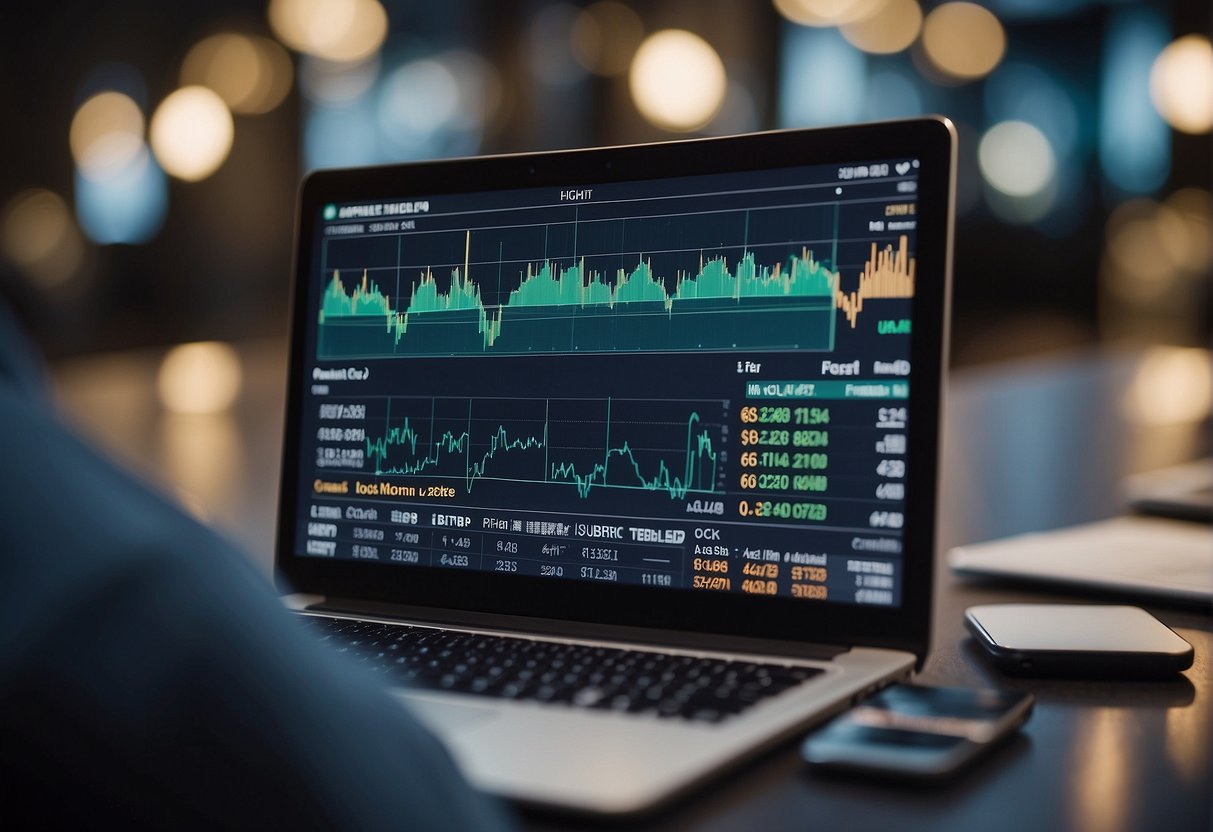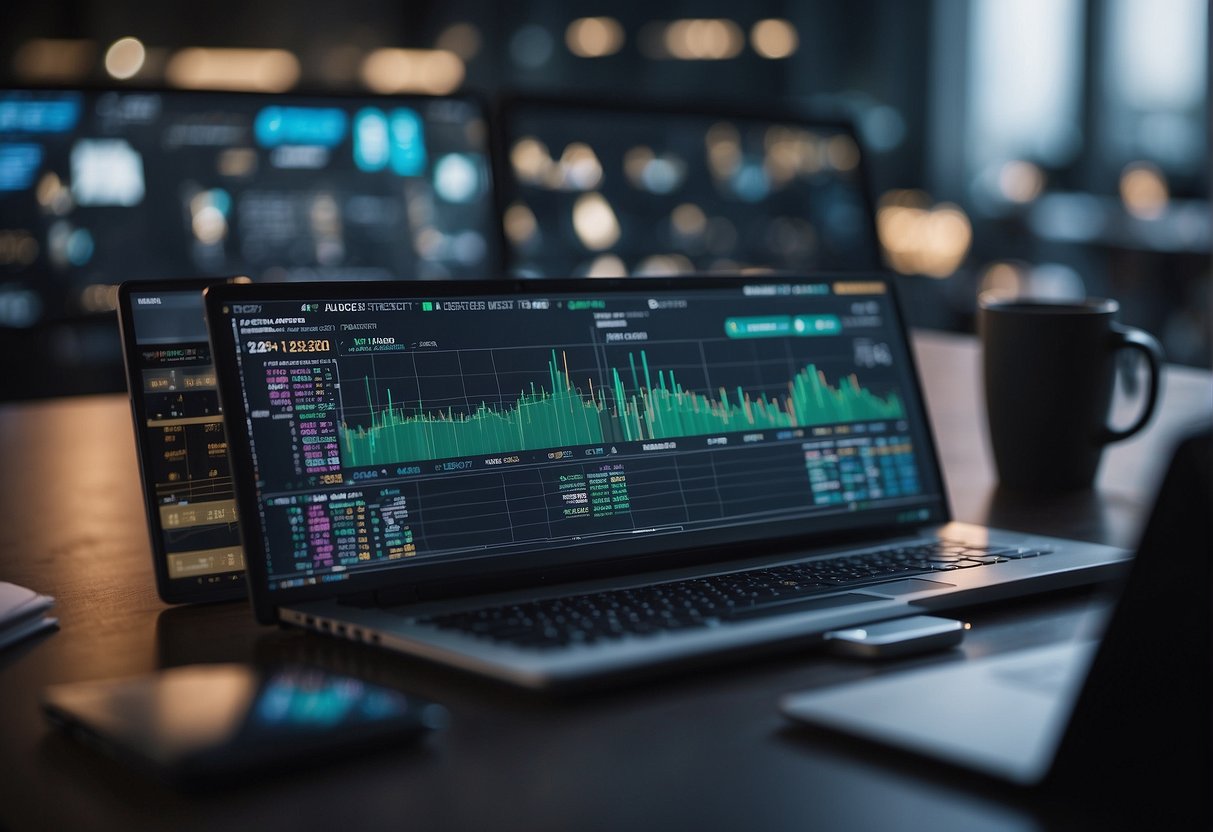Forecasting in Digital Ledger Technology: Enhancing Cross-Asset Post-Trade Processes

In the evolving world of financial services, the application of digital ledger technology (DLT) is revolutionizing how cross-asset post-trade processes are managed. By providing an immutable, real-time ledger of transaction records across multiple parties, DLT offers unparalleled transparency, reduction in counterparty risk, and increased efficiency. Integrating advanced analytics and artificial intelligence with these ledgers further enhances forecasting capabilities, offering financial institutions predictive insights that drive strategic decisions and operational improvements in post-trade processes.

These innovations present opportunities to mitigate risks and adhere to the growing web of regulatory requirements. By leveraging DLT's inherent features, such as its decentralized nature and cryptographic security, financial organizations can transform the traditionally complex, multi-step post-trade phase into a more streamlined and cost-effective procedure. Adopting digital ledger technologies in capital markets will create a more resilient financial ecosystem where cross-asset transactions can be processed and forecasted more accurately and quickly.
Key Takeaways
- Digital ledger technology is transforming cross-asset post-trade processes, offering enhanced transparency and efficiency.
- AI integration with digital ledgers provides improved forecasting and strategic insights for financial services.
- The application of DLT is instrumental in meeting regulatory demands and reducing operational risks in financial markets.
Digital Ledger Technologies in Capital Markets

Digital ledger technologies, such as blockchain and distributed ledger systems, have become integral to modernizing the capital markets infrastructure. They offer enhanced security, transparency, and efficiency in post-trade processes across various asset classes.
Relevance of Blockchain and Distributed Ledgers
Blockchain and distributed ledger technologies (DLT) have emerged as pivotal innovations in the financial industry, specifically in capital markets. These technologies enable a decentralized and immutable record-keeping system. Transactions are verified by consensus among participants, which reduces the need for centralized clearinghouses and can potentially minimize counterparty risk.
Impact on Trade Lifecycles and Settlement
The adoption of blockchain and DLT can substantially streamline the trade lifecycle from initiation to final settlement. It simplifies the clearing and settlement processes by providing a single, shared source of truth for all parties involved. This leads to faster settlement cycles, reduced reconciliation costs, and improved operational efficiencies, ultimately reshaping the financial industry's approach to cross-asset trading.
Advancements in AI for Post-Trade Processing

Post-trade processing is undergoing a transformative change driven by artificial intelligence (AI), reshaping how financial markets operate after a trade is executed. These advancements forge a path toward greater efficiency and compliance adherence in the operations that follow securities transactions.
AI Implementation and Capabilities
AI in post-trade processing introduces cutting-edge capabilities such as predictive analytics for risk management and intelligent automation for operational tasks. Automation of manual processes translates to reduced operational risks and elevated efficiency. For example, AI can facilitate the real-time reconciliation of trades, ensuring data integrity and swift resolution of discrepancies.
Automating Compliance and Reporting
AI's role extends to automating compliance by keeping track of ever-evolving regulatory landscapes, thus safeguarding against reputational and financial harms due to non-compliance. Advanced algorithms can parse vast regulations, ensuring reporting requirements are met with precision. These systems provide transparent audit trails and proactive compliance monitoring, which is essential for maintaining market integrity.
Mitigating Risks with Modern Technology

Modern technology is crucial in reducing risks associated with post-trade processes in an increasingly digital financial landscape. Leveraging distributed ledger technology (DLT) can lead to more efficient and secure transactions across various asset classes.
Counterparty Risk Reduction
Counterparty risk, the possibility that one party in a transaction might default before settling, is critical in trading. Distributed ledger technology allows the creation of shared records that are updated in real-time and immutable once recorded. These shared ledgers give all parties visibility into the transaction's status, enhancing counterparty risk management and reducing the likelihood of default.
Enhancing Controls through Automation
Automation in post-trade processes ensures that controls are stringent and consistently applied. By implementing automated workflows, financial institutions can streamline settlements and reduce the potential for human error. The use of automation in risk management and post-trade services, such as automatic reconciliation and confirmation, leads to a more secure ecosystem where risks are managed proactively. This fosters a heightened level of security and reliability in cross-asset trading operations.
Cross-Asset Post-Trade Solutions

In the cross-asset post-trade processes domain, stakeholders consistently strive for solutions that promote operational efficiency and address the complexities of interoperability. These solutions are critical in managing the post-trade lifecycle of transactions across multiple asset classes.
Achieving Operational Efficiency
Firms are turning to digital ledger technologies for operational efficiency in post-trade solutions. These technologies promise real-time processing and reduced reconciliation issues. This technology can enable more scalable infrastructure, allowing the handling of increasing volumes without proportionate increases in cost or resources. A seamless integration of such digital ledgers can significantly diminish operational risks and costs.
Interoperability Challenges and Solutions
The notion of interoperability poses a significant hurdle as firms must navigate a landscape where multiple systems and standards coexist. Solutions to these challenges often involve developing cross-asset platforms that communicate with various ledgers and protocols. Through this communication, financial institutions can ensure that post-trade data across different asset classes is consistent and accurate, facilitating more complex trading strategies and operations.
Regulatory Considerations in Financial Markets

In the evolving realm of financial markets, regulatory considerations play a pivotal role in shaping the mechanics of digital ledger technologies (DLT) for cross-asset post-trade processes. Regulators consistently update reporting requirements and compliance measures, ensuring that markets remain transparent and function efficiently.
Adapting to Regulatory Reporting and Compliance
Entities involved in finance must streamline their operations to meet the ever-evolving demands of regulatory reporting and compliance. They must capture comprehensive trade and transaction data, detailing every aspect from execution to settlement. This ensures accountability and a robust auditing trail, bringing consistency to digital ledger records.
Navigating the Global Regulatory Landscape
The global regulatory landscape presents a complex patchwork that financial institutions must navigate dexterously. With cross-border transactions, firms encounter a variety of regulatory climates and must adhere to each jurisdiction's unique requirements. Regulatory interventions can arise swiftly, and a firm's ability to adapt can be decisive in maintaining compliance amid international trade.
Transforming Post-Trade with Fintech Innovation

The infiltration of fintech into the post-trade environment has sparked significant developments in efficiency and connectivity, revolutionizing the industry with advanced technological integration.
The Role of Fintech in Post-Trade Evolution
Fintech companies have become catalysts for transformation in post-trade processes. They bring forth innovative digital ledger technologies that simplify the traditionally complex workflows of cross-asset post-trade operations. By leveraging the power of fintech, firms like Torstone Technology are driving the post-trade world towards a more streamlined and cost-effective future.
Adopting digital ledgers facilitates an improved settlement process, reducing the risk of errors and delays. It assures greater transparency and a real-time view of post-trade data, enabling participants to make informed decisions quickly.
Incorporating APIs for Enhanced Connectivity
APIs play a pivotal role in enhancing post-trade connectivity. They are the building blocks for integrating different platforms and services, which is critical for a seamless post-trade environment.
Incorporating APIs allows for the smooth exchange of information across various systems, fostering efficiency in post-trade processes. These interfaces can connect with legacy systems, mitigating the need for extensive overhauls and reducing adaptation costs.
By implementing APIs, fintech solutions can offer greater flexibility and scalability. This makes it easier for financial institutions to adapt to markets and regulatory requirements while maintaining robust post-trade operations.
The Future Prospects of Digital Asset Trading

Technological advancements and regulatory shifts are increasingly influencing the evolving landscape of digital asset trading. These factors are pivotal in shaping the future integration and operation of digital currencies and assets in financial markets.
Integration of Digital Currencies and Assets
Digital currencies and assets are poised for greater adoption in financial ecosystems, promising enhanced liquid emergence of distributed ledgers to facilitate the city and a broader investor base. Integrating d the emergence of distributed ledgers ensures security and transparency in transactions. These technologies are crucial in supporting cross-asset trades and enabling a holistic view of asset management across various classes.
Smart Contracts and Automated Clearing
Smart contracts revolutionize the clearing process by automating trade settlements, minimizing counterparty risks and streamlining post-trade processes. They facilitate real-time reconciliation and settlement that can transform the back-office operations of financial institutions. Through automated clearing mechanisms, smart contracts ensure that contractual conditions are fulfilled instantly, mitigating the delays often associated with traditional settlement methods.
Frequently Asked Questions

Digital ledger technology is revolutionizing post-trade processes, especially in the context of cross-asset transactions and during volatile market conditions.
How does on-chain asset tokenization impact post-trade processes during periods of market downturns, such as a crypto winter?
During market downturns, on-chain asset tokenization provides transparency and efficiency in post-trade processes. It accurately tracks asset value and ownership, which is critical in crypto winter scenarios.
What are some practical examples of digital ledgers implemented for cross-asset post-trade forecasting?
Digital ledgers have been used to improve to improve the efficiency of post-trade clearing and settlement. A notable implementation is Trax systems, which process over a billion cross-asset class transactions.
What differentiates Distributed Ledger Technology (DLT) from Real-Time Gross Settlement (RTGS) systems in financial transactions?
DLT offers decentralized record-keeping with multiple participants maintaining copies of the ledger, enhancing transparency and resilience. In contrast, RTGS systems provide real-time, individual processing of transactions on a centralized ledger, focusing on high-value and time-critical payments.
Can you outline the process and significance of tracking cryptocurrencies using digital ledger technology?
Digital ledger technology facilitates the secure and unalterable recording of cryptocurrency transactions. This is critical in providing transparency and verifiability to all participants, crucial aspects in a decentralized financial ecosystem like cryptocurrencies.
What are the main risks and considerations when integrating Distributed Ledger Technology in cross-asset post-trade processes?
Some risks include the potential for technology failure, scalability issues, and regulatory uncertainty. Firms must consider the security, interoperability, and compliance implications when integrating DLT in cross-asset post-trade operations.
How does the digital ledger process facilitate distributed ledger transactions, and what are its key components?
The digital ledger process ensures consensus on transaction validity and maintains tamper-evident data asset data integrity. Its key components include a decentralized network, cryptographic signatures, and a consensus algorithm fortifying trust in distributed ledger transactions.


